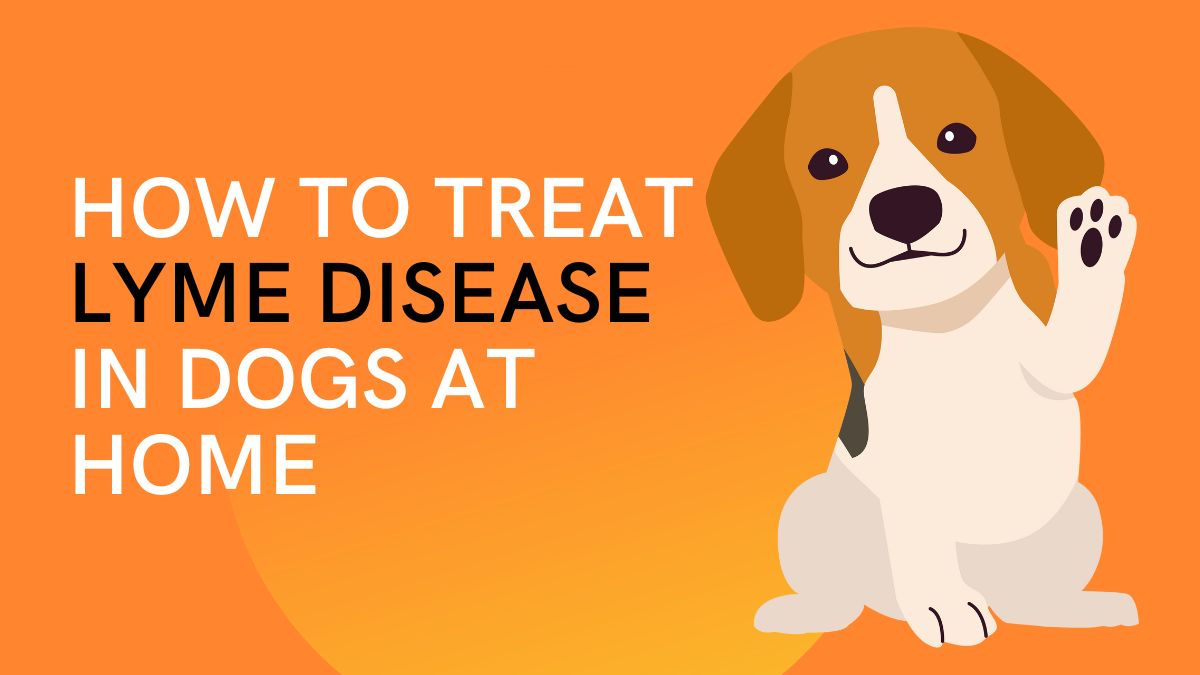Introduction how to treat lyme disease in dogs at home
If your dog is suffering from lyme disease then write the full article. In this topic, I will explore how to treat Lyme disease in dogs at home.
The challenge with Lyme disease in dogs lies in its elusive nature. Symptoms can be difficult to detect as they overlap with other common ailments.
While some dogs never show any signs of being infected, others may experience lethargy, loss of appetite, lameness due to joint pain, or even kidney problems. This makes regular check-ups and preventative measures all the more crucial for our canine companions.
Early detection and treatment of Lyme disease in dogs is crucial for ensuring the well-being and longevity of our furry friends.
Often transmitted through tick bites, this debilitating disease can wreak havoc on a dog’s health if left untreated. While prevention methods such as tick control products and vaccines are available, it is essential to catch any signs or symptoms of Lyme disease early on.
Home treatment options for Lyme disease in dogs can be a vital part of their recovery. One such option is the use of antibiotics, which are commonly prescribed to combat the infection caused by Lyme disease.
These medications work by killing the bacteria responsible for the illness and alleviating symptoms. Additionally, supplements like probiotics can help support your dog’s immune system during treatment, promoting a faster recovery.
A guide video of How to treat lyme disease in dogs at home
Table of Contents
How to test a dog for Lyme disease
Testing for Lyme disease isn’t just important for treatment purposes but also for preventive measures.
Even if your dog doesn’t currently show any symptoms or seems healthy, it’s still essential to get them tested regularly – especially if you reside in an area known for high tick activity or have recently visited such areas with your canine companion.
Remember that early detection of Lyme disease leads to a better prognosis and more effective treatment options. By regularly testing your dog, you can catch the infection at its earliest stages and prevent serious long-term complications from developing.
How to protect your dog from Lyme disease
Another important step in safeguarding your dog against Lyme disease is regularly checking for ticks after outdoor activities.
Ticks tend to attach themselves in hidden areas like between the toes, behind the ears, under the armpits, and along the belly.
Thoroughly inspecting your dog’s fur and removing any attached ticks promptly can significantly reduce the risk of infection. Remember to use tweezers or specialized tick removal tools and follow proper techniques while removing them, ensuring no mouthparts are left behind.
How to treat lyme disease in dogs at home and Can you get Lyme disease from a dog?
To protect yourself and your furry friend from ticks and potential infections, regularly inspect your dog’s coat after walks in areas where ticks are prevalent, such as wooded areas or tall grasses.
Additionally, consult with your veterinarian about appropriate tick prevention methods for your specific geographical location.
Remember, keeping your pets free from ticks not only safeguards their health but also significantly reduces any potential risk to you or your family members!
Do dogs get bullseye rash from Lyme disease?
While it is true that some dogs infected with Lyme disease may display symptoms similar to the bullseye rash seen in humans, these cases are relatively rare.
Dogs affected by this condition often exhibit less visible signs such as lethargy, lameness, and joint pain.
The absence of an easily identifiable bullseye rash in most canines makes it challenging for owners to promptly recognize and seek treatment for their infected pets.
how effective is the Lyme disease vaccine for dogs?
The lyme disease vaccine for dogs has been a topic of debate among pet owners and veterinarians alike. While some swear by its effectiveness, others question its necessity and potential side effects. So, how effective is the lyme disease vaccine for dogs?
Research indicates that the vaccine can provide protection against the most common strains of bacteria causing lyme disease in dogs.
It stimulates their immune system to produce antibodies that can neutralize the bacteria before it causes harm. However, it’s important to note that no vaccine is 100% effective. Some dogs may still contract lyme disease even after vaccination, though their symptoms may be less severe.
One challenge with the lyme disease vaccine is its limited duration of efficacy.
Studies show that immunity decreases over time, meaning booster shots are required to maintain protection against future infections.
Can you catch lyme disease from a dog?
Lyme disease is a growing concern for many pet owners, as ticks carrying the bacteria that causes the disease are becoming more prevalent in certain regions.
But can you catch Lyme disease from your furry companion? The short answer is no, you cannot directly contract Lyme disease from a dog. However, dogs can still play a role in transmitting infected ticks to humans.
How to treat lyme disease in dogs at home and Can lyme disease cause seizures in dogs?
Seizures occur when there is abnormal electrical activity in the brain, which can lead to uncontrollable shaking and convulsions.
The correlation between Lyme disease and seizures in dogs is not fully understood yet, but it is believed to be related to the inflammation caused by the bacterial infection. Inflammation can directly impact the central nervous system’s functioning and disrupt normal brain activity—resulting in seizures
Can dogs get lyme disease while on nexgard
Lyme disease is a serious concern for dog owners, and many seek protection through medications like NexGard. However, there is an ongoing debate about whether these preventive measures are foolproof.
While NexGard is effective against fleas and ticks, including the species that carry Lyme disease, it does not guarantee complete immunity.
Dogs can still contract Lyme disease while on NexGard if they encounter an infected tick that has already bitten them.
Do dogs die from lyme disease?
While dogs do have the potential to die from Lyme disease if left untreated or undetected, prevention plays a crucial role in keeping our furry friends safe from this illness.
Regular check-ups with veterinarians and staying informed about preventive measures are key components of responsible pet ownership when it comes to protecting our canine companions from this tick-borne infection.
Can a dog get lyme disease from eating deer poop?
Lyme disease, caused by the bacterium Borrelia burgdorferi, is a serious concern for both humans and dogs.
While it is well-known that ticks are the primary carriers of this disease, many pet owners wonder if their furry friends can contract Lyme disease from eating deer poop. The answer is not as straightforward as one might think.
What percentage of dogs die from lyme disease
The percentage of dogs that die from Lyme disease is relatively low.
According to the Centers for Disease Control and Prevention (CDC), most dogs infected with Lyme disease show mild symptoms or no symptoms at all. Only a small percentage of infected dogs develop severe complications, such as kidney damage or heart conditions, which can potentially be fatal if left untreated.
Conclusion
Lyme disease in dogs can be a serious and potentially debilitating condition, there are steps that can be taken at home to help manage and treat the disease.
Starting with prevention measures such as tick prevention products and regular tick checks, pet owners can greatly reduce the risk of their dogs contracting Lyme disease in the first place.
If a dog is diagnosed with Lyme disease, early treatment with antibiotics prescribed by a veterinarian is key. Additionally, providing a well-balanced diet, plenty of rest, and supplements to support the immune system can aid in recovery.
By being vigilant and proactive in our approach to treating Lyme disease in dogs at home, we can ensure our furry friends have the best chance of overcoming this illness and living healthy lives.
Read this article also How to treat your dogs with kidney disease.










